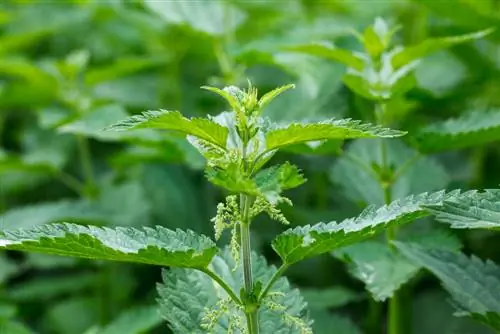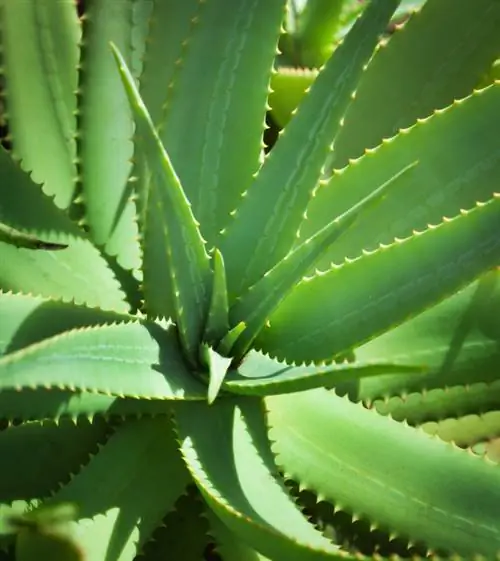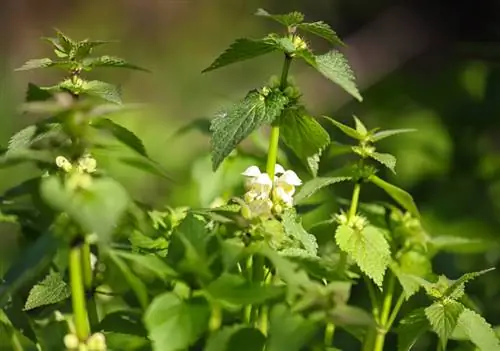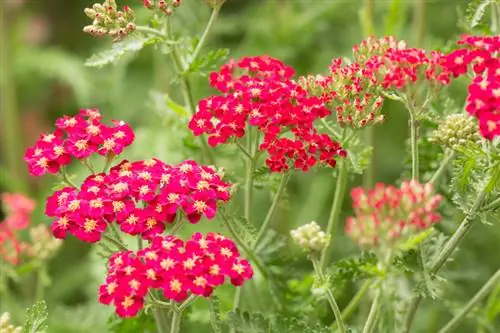- Author admin [email protected].
- Public 2023-12-16 16:46.
- Last modified 2025-01-23 11:20.
Not all nettles are the same. While there are more than 30 species spread around the world, only 4 species can be found in this country. These representatives of the nettle family are examined closely here

What types of nettle are there in Germany?
Four species of nettle are common in Germany: the large nettle (Urtica dioica), the small nettle (Urtica urens), the reed nettle and the rare pill nettle. They differ in height, leaf shape, flower structure and distribution area.
The Big Nettle
The best known in Germany is the large nettle (Urtica dioica). As its name suggests, it grows up to 3 m high and can be used as a medicinal plant just like its counterparts.
Its leaves are dark green, strongly serrated at the edge and it produces panicle-shaped inflorescences between July and October. In contrast to those of other nettle species, the flowers are dioecious, i.e. H. there are male and female flowers.
The Little Nettle
The second most common nettle species in Germany is the small nettle (Urtica urens). Your characteristics:
- 15 to 45 cm (less often up to 60 cm) high
- Occurrence: paths, fields, meadows, gardens
- without underground root runners in contrast to the large nettle
- 3 to 5 cm long, ovate-elliptical leaves with incised edges
- hermaphrodite flowers
The reed nettle
In the Havel area and outside of Germany in many parts of Eastern Europe, reed nettle is increasingly appearing. It has no bristle hairs, but has stinging hairs. The leaves appear shiny due to the lack of bristles. They have long stalks and the panicle-shaped inflorescences appear between July and August. As a rule, it grows to a height of 30 to 60 cm.
The pill nettle and other species
Very rare in Germany is the pill nettle, which originally comes from the Mediterranean and is widespread in southwest Asia. It is also known as Roman nettle. It is one to two years old and grows up to 1 m high. Their flowering period is between April and October.
Elsewhere in the world you can find the Siberian hemp nettle, the tailed nettle and the Mallorca nettle, to name just a few. They all have stinging hairs that cause hives when touched or harvested.
Tip
If you want to fight nettles, you should first find out what type it is. For example, the small nettle is much easier to destroy than the large nettle, which spreads quickly via root runners.






